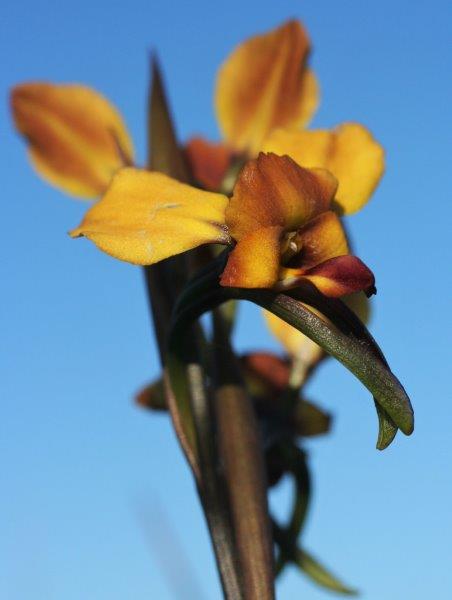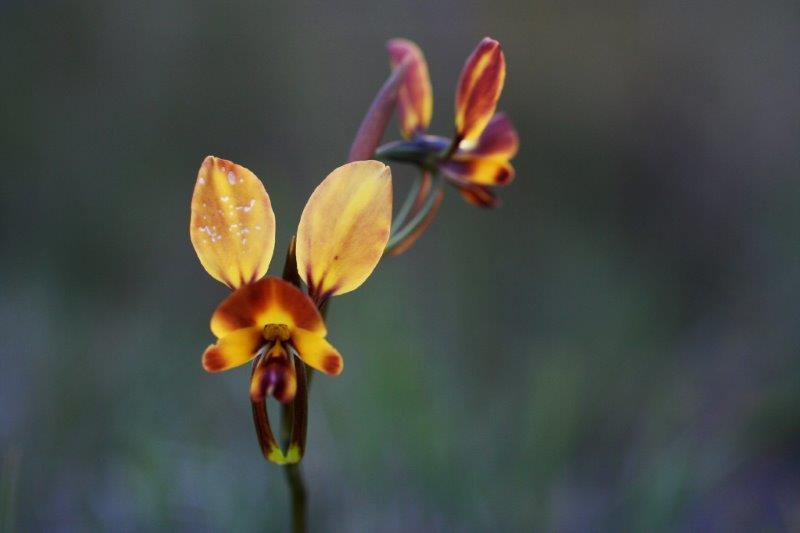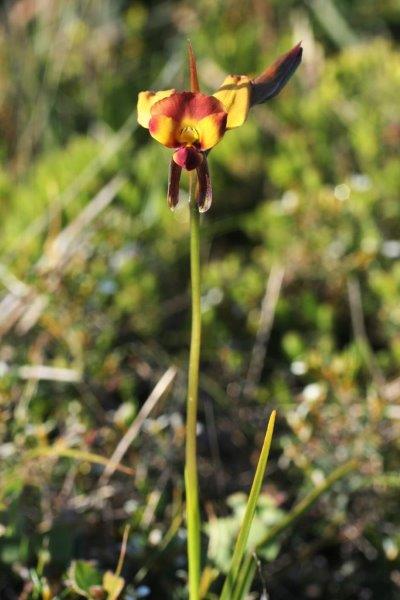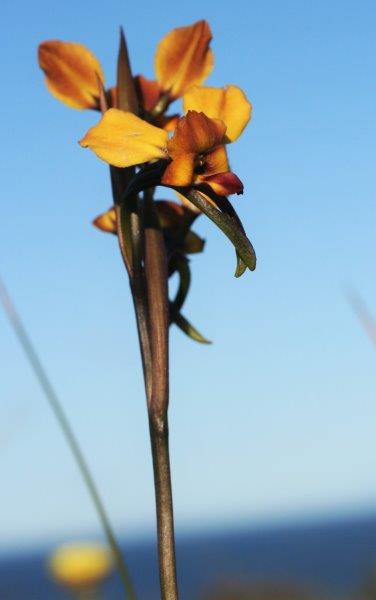



Along the Jan Juc cliff top this species has been identified at just one just site within Coastal Heathland towards Bells Beach. It is much more common further southwest in various locations around Anglesea where it grows in a number of vegetation types.
The species name 'orientis' means east in reference to its close affinity to the Western Australian Diuris coymbosa group from which it was split with D.orientis recognised as the most easterly of the group. As a species it is variable across its range in both flower colour and flower size.
Leaves vary from one to three; linear and grasslike, channelled, erect or lax to 25mm.
Flowers are produced in spring on a flower stem to 30cm in height. From one to eight yellow flowers with various tints of reddish-brown to purplish shadings are possible. Pure yellow has also been documented in Anglesea.
This species flowers best after fire; its very limited presence within coastal heath at places like Bells Beach might simply be that it is undetectable until such an event occurs.
The two sides of the leaf are different colours